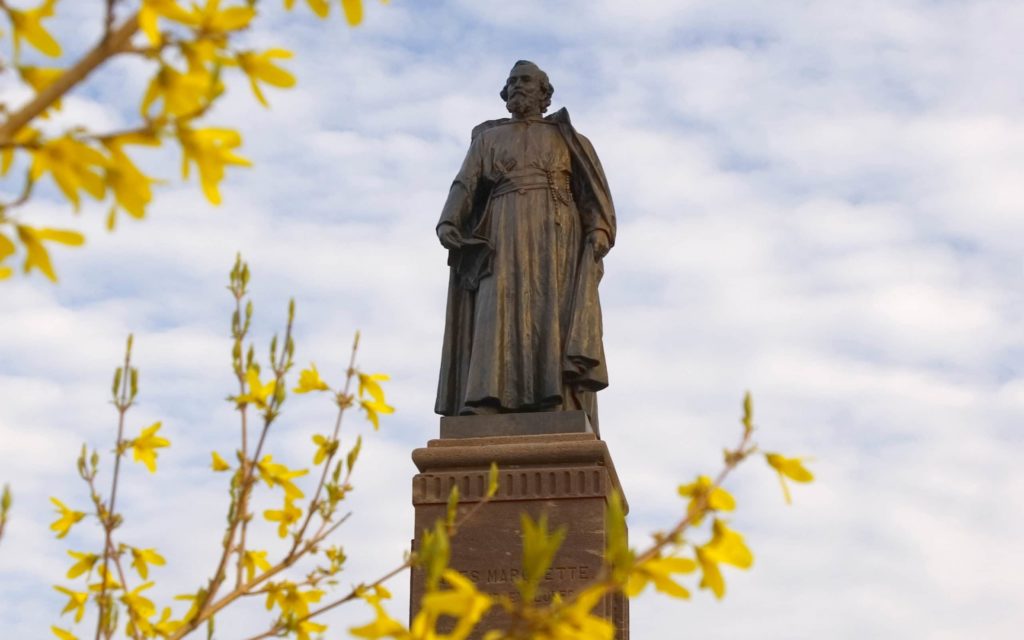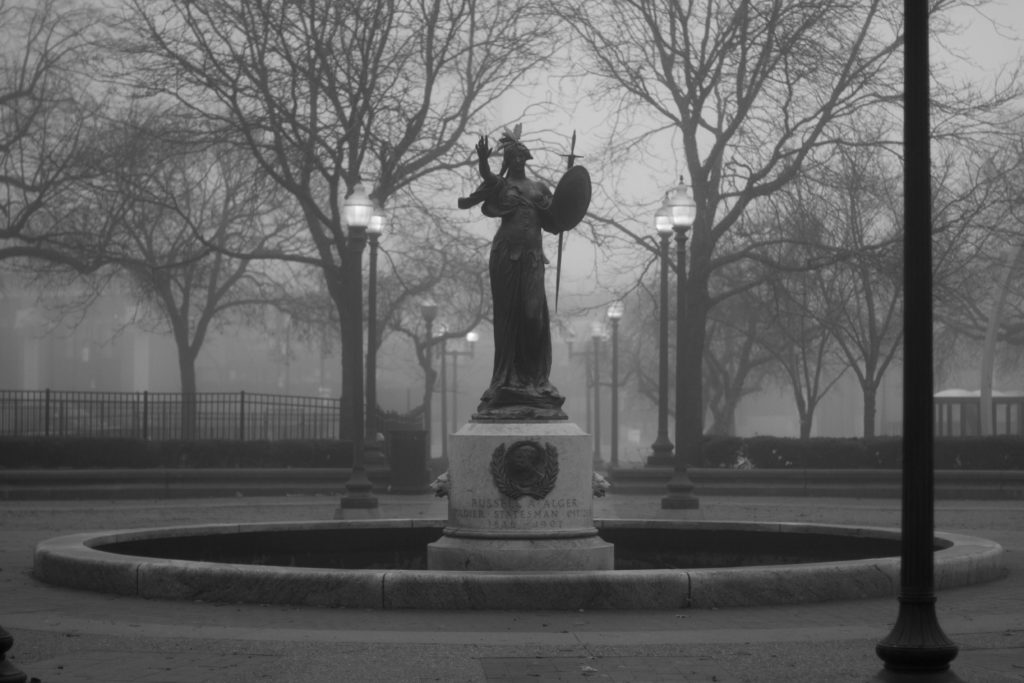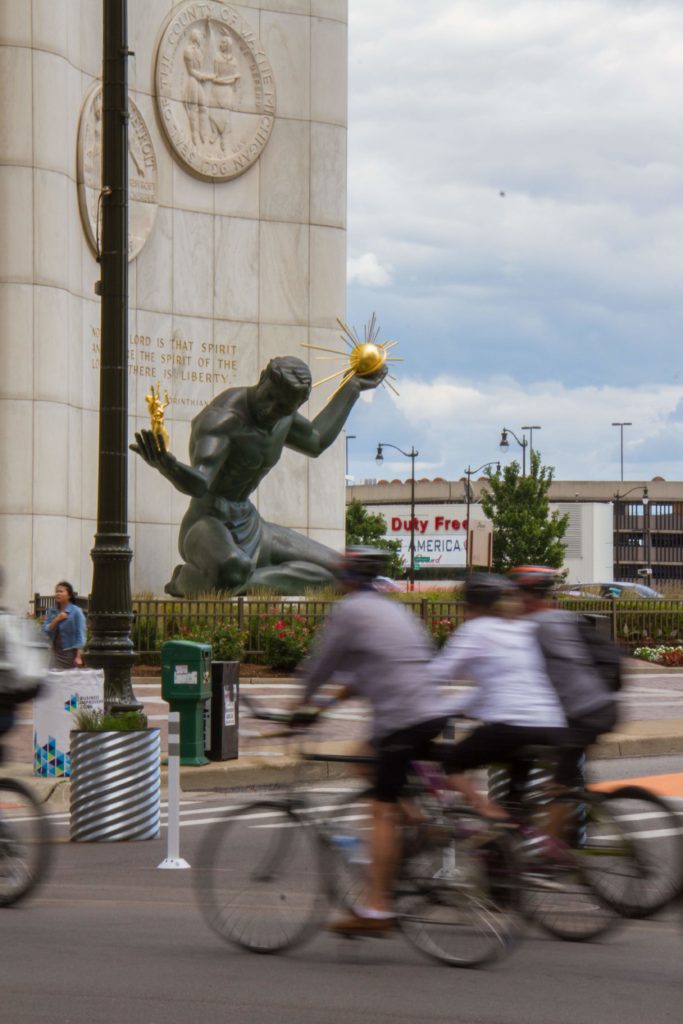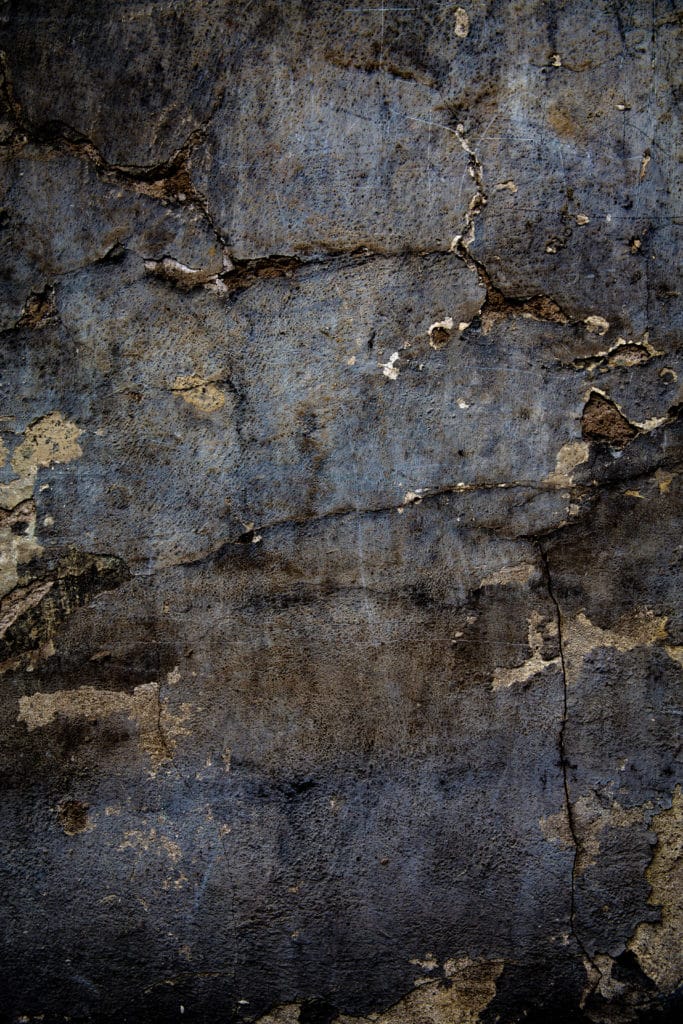July 24, 1701, is seen as Detroit’s “start date,” when French Gen. Antoine Laumet de la Mothe Cadillac and his party — accompanied by two priests — landed on Detroit’s shores and constructed a fort.
Detroit’s first parish, Ste. Anne de Detroit, began two days later. But preaching Christ on the Michigan peninsulas began long before Detroit’s founding.
When French explorer Samuel de Champlain founded the city of Quebec and explored the Great Lakes in the early 1600s, he had lofty hopes for the region,
“I have always desired to see in New France, the lily bloom in union with the Catholic, Apostolic and Roman church,” he wrote in a letter. “I hope that God will grant the grace of his Majesty of one day doing this much for the service of God, his own grandeur, and the good subjects, that he bring many poor peoples to the knowledge of the Faith so that they may enjoy someday the heavenly kingdom.”
New France was missionary territory and lured religious leaders who sought to expand the kingdom of God.
Many others who flocked to the region were drawn by an opportunity for wealth. Hunters, prospectors and coureurs de bois— a loosely defined term for unlicensed traders — were rugged individuals who were a sharp contrast to the priests and nobility who established forts and missions. It was a tension that would fester among various tribes in Michigan’s settlements for 200 years.
Crying in the desert
One of the first French missionaries to the region, Father Claude Allouez, S.J., wrote to his fellow Jesuits the kind of priest called to this mission ground.
“They must be a person dead to the world and to themselves; apostolic men and holy, who seek only God and the salvation of souls,” he explained. “They must love the Cross and mortification; they must not spare themselves; they must desire the conversion of one Indian above an empire. They must be in the forest of Canada as so many precursors of Jesus Christ, crying in the desert to call the races to the Savior.”
Father Jacques Marquette, a French Jesuit, was one such missionary. He founded the first permanent settlement in Michigan at Sault Ste. Marie and established the St. Ignace Mission on the northern shores of the Michilimackinac strait that divided the Upper and Lower peninsulas of the land. It was here missionaries brought the word of Christ to the Huron Indians, while traders brought goods from the Old World.
The St. Ignace Mission became a center of trade and mission activity for the area. But as the Jesuits preached Christ, conflicts arose between the religious order and the secular authority of New France. Traders introduced liquor, previously unknown to the native tribes, in a move to curry favor and draw the tribes away from English influence.
The Jesuits and their Indian congregations were caught in a power dynamic between rival empires expanding their influence, making and breaking alliances with stronger Indian tribes to dominate the region.
Father Allouez expanded the Jesuit reach by building the St. Joseph Mission in 1672 at the base of the St. Joseph River, next to a French fort. The St. Joseph Mission was the center of evangelization and outreach to the native Miami and Potawatomi tribes, who allied with the French to defend themselves against the dominant Iroquois to the south and the Sioux to the west.
Like Father Marquette, Father Allouez and his companions constructed a chapel, taught the natives the truths of the faith and served as translators and guides for French explorers and traders and Indian hunters and trappers.
A new force
In 1694, a new force in Michigan’s missionary history came to the forefront: Gen. Cadillac, who looked to create a fort built with defense and commerce — not missionaries — in mind.
Detroit’s beginning marked the beginning of the end of the Jesuits’ first missions in the territory. By 1705, the Jesuit fathers abandoned St. Ignace as the shift in trade, commerce and settlement in the peninsula started to gravitate to Detroit.
The conflict between Cadillac and the Jesuits came to a head when Cadillac encouraged traders to increase the access of alcohol to the native population, over the protests of the missionaries who worried drunkenness would ruin their souls.
Father Etienne Carheil, originally stationed at St. Ignace, described Cadillac as “the most violent … person he had ever known” in a letter to his superior after a contentious meeting with Cadillac regarding the continuation of the liquor trade.
But Cadillac wouldn’t budge on the issue of alcohol, accusing the missionaries of being “disloyal to the king” and not serving the interest of France. In addition, the French encouraged native tribes to adopt French customs, language and dress, which ran counter to the original work of the Jesuit missionaries who preached Christ to the natives in a way that maintained most of their cultural integrity
Father Francois Vaillant de Gueils, a Jesuit priest, accompanied Cadillac’s party that built Fort Pontchartrain on the banks of the Detroit River. But by the time of Detroit’s construction, the balance of power in the region between religious and secular authority had flipped, with Cadillac’s political and commercial interests firmly dictating policy.
Father Vaillant, a missionary since 1670, clashed with Cadillac’s policies on the new settlement. Cadillac encouraged natives to settle into “Indian villages” outside of the fort’s wall, drawing them further into French influence — something the Jesuits feared would disrupt the natives’ way of life.
The Jesuits kept their presence at St. Joseph, but the establishment of Detroit forever altered the progress of colonization in the region, with clergy and explorers being more drawn to Detroit than to the St. Joseph community.
With Detroit’s establishment, missionary work in Michigan changed, from the explorer-priest visiting native tribes to the creation of churches, schools and a more organized church — a church that would have to contend with a more established secular authority.
The early days of missionary activity in Michigan are a story of brave priests accompanying explorers and hunters to discover parts unknown. Of French clergy learning the ways and customs of natives to preach a new message of the creator of the earth dying for the lives of his creation. Of constructing chapels in the wilderness to minister to scattered and, at times, hostile tribes. All while working with a secular authority more interested in profit and power than the salvation of souls.
Priests such as Fathers Marquette, Allouez and Vaillant first brought the message of Jesus Christ to this land. They lay the groundwork of missionary zeal that began on the peninsula well before Detroit’s founding and will continue well into the city’s future.
Research for this article was done using The Catholic Church in Detroit 1701-1888,by George Pare, a worked commissioned by Detroit Ordinary, His Eminence Edward Cardinal Mooney.




